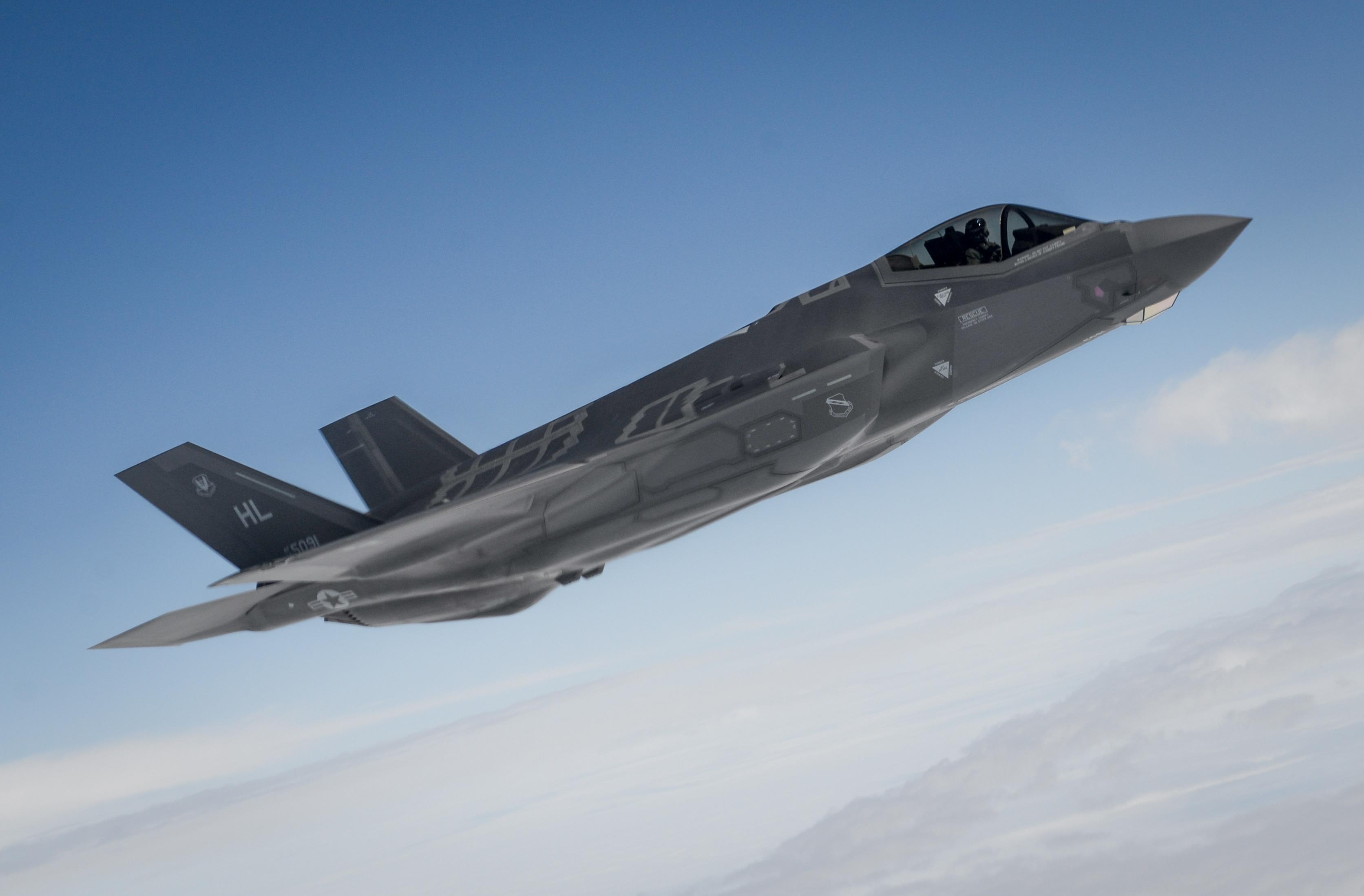A USAF F-35A assigned to Hill AFB, Utah, prepares to be refueled during a flight to Graf Ignatievo AB, Bulgaria, April 28, 2017. Air Force photo by SSgt. Kate Thornton.
The Defense Department awarded Lockheed Martin a $1.377 billion contract on April 28 to start the process of the so-called “block buy” program, expected to save $2 billion over three lots of production.
The contract buys “long lead-time materials, parts, components and effort” for 130 US and foreign F-35s in Lot 12, and 110 foreign F-35s in Lots 13 and 14, the Pentagon said.
The US can’t participate in the Block Buy—akin to a US “multi-year procurement”—as such because a program must be in full rate production to qualify, and the F-35 is still in a “low rate” phase. However, the US can obtain cost benefits from F-35 partners purchasing “economic order quantities” (materials in large volume) and from improvements in the learning curve stemming from the higher rate of production.
Sixty-five percent of the contract pays for materials to be used by foreign F-35 buyers and the rest is standard long-lead purchasing for US aircraft. Even though the contract covers Lot 12, 13, and 14 “long-lead” items, a final deal on Lot 11 remains in negotiation and is expected to be awarded this year.
A Joint Program Office spokesman said the services will make a separate request to congress to authorize and appropriate F-35 buys “in every year,” although it’s been a stated goal of the program to eventually move into a multi-year arrangement sometime after full-rate production is underway.
“There is no multi-year commitment for US services aircraft and engines, which will continue to be bought on an annual basis … and preserves congressional annual discretion,” JPO director Lt. Gen. Christopher Bogdan said in February testimony before the Senate Armed Services Committee.
The estimated $2 billion in savings, he said, is as compared with the Lot 11 estimated annual procurement price. It’s been validated by a JPO estimate, “an industry analysis, and an independent assessment conducted by the RAND corporation,” Bogdan said. Other “cost reduction initiatives … may not have been otherwise executed, if not for a stable multiple year requirement to procure parts,” he added.
The risk, Bogdan said, is “considered low” because the F-35 design will be “stable during this period of time,” and the F-35 is already through its second 8,000-hour life durability testing.
